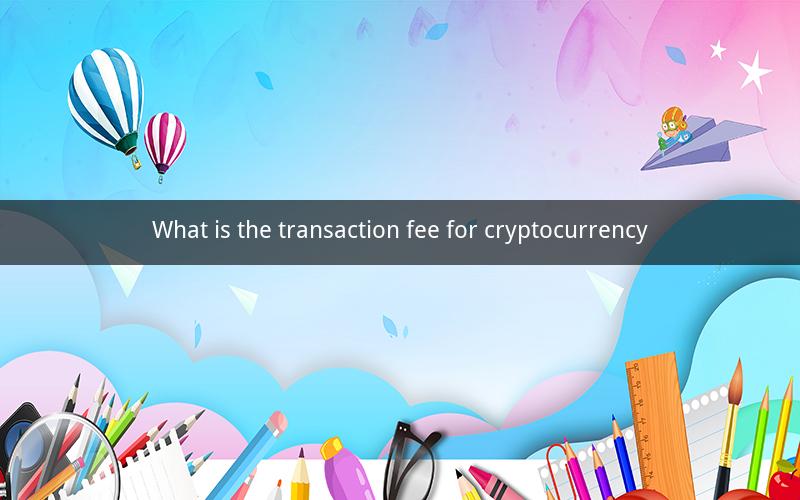
Cryptocurrency Transaction Fees: A Comprehensive Guide
Table of Contents
1. Introduction to Cryptocurrency Transaction Fees
2. How Transaction Fees Work
3. Factors Affecting Cryptocurrency Transaction Fees
4. The Impact of High Transaction Fees
5. The Impact of Low Transaction Fees
6. Strategies to Reduce Cryptocurrency Transaction Fees
7. The Future of Cryptocurrency Transaction Fees
1. Introduction to Cryptocurrency Transaction Fees
Cryptocurrency transaction fees are a fundamental aspect of the blockchain technology that underpins digital currencies. These fees are paid to miners, who validate and process transactions on the network. Understanding how transaction fees work and the factors that influence them is crucial for users and investors in the cryptocurrency space.
2. How Transaction Fees Work
When a user initiates a cryptocurrency transaction, they must pay a fee to the network. This fee is usually denoted in the cryptocurrency's smallest unit, such as satoshis for Bitcoin. Miners select transactions to include in a block based on the fee they are willing to pay. The higher the fee, the more likely the transaction is to be processed quickly.
3. Factors Affecting Cryptocurrency Transaction Fees
Several factors can influence the transaction fees for cryptocurrencies:
- Network congestion: When the network is busy, miners have more transactions to choose from, and they are likely to prioritize those with higher fees.
- Block size: The size of a block can also affect fees, as a larger block can accommodate more transactions.
- Confirmation time: Users are willing to pay more for faster confirmation times, as it ensures their transactions are processed quickly.
- Market conditions: The overall demand for a cryptocurrency can impact fees, with higher demand leading to higher fees.
4. The Impact of High Transaction Fees
High transaction fees can have several negative consequences:
- Reduced usability: High fees can make cryptocurrencies less accessible to users, particularly those with limited funds.
- Incentive for centralized solutions: High fees can encourage users to seek alternative, centralized solutions for their transactions.
- Impact on small transactions: High fees can discourage users from making small transactions, as the cost of the fee may exceed the value of the transaction.
5. The Impact of Low Transaction Fees
Low transaction fees can have several positive consequences:
- Increased usability: Low fees make cryptocurrencies more accessible to users, particularly those with limited funds.
- Encouragement of small transactions: Low fees can encourage users to make small transactions, as the cost of the fee is negligible.
- Reduced barriers to entry: Low fees can reduce the barriers to entry for new users, as they can participate in the network without significant financial investment.
6. Strategies to Reduce Cryptocurrency Transaction Fees
There are several strategies that users can employ to reduce their cryptocurrency transaction fees:
- Use smaller denominations: By using smaller denominations, users can make more transactions without incurring higher fees.
- Wait for off-peak times: Waiting for times when the network is less congested can result in lower fees.
- Use alternative networks: Some cryptocurrencies offer alternative networks with lower fees, such as the Lightning Network for Bitcoin.
7. The Future of Cryptocurrency Transaction Fees
The future of cryptocurrency transaction fees is uncertain but likely to be influenced by several factors:
- Network scaling: As networks scale, they may become more efficient and require fewer fees.
- Adoption of alternative technologies: The adoption of new technologies, such as sharding, may reduce the need for high fees.
- Market competition: Increased competition among cryptocurrencies may lead to lower fees as networks strive to attract users.
Frequently Asked Questions
1. What is a cryptocurrency transaction fee?
- A cryptocurrency transaction fee is a payment made to miners for processing a transaction on the blockchain network.
2. How are transaction fees calculated?
- Transaction fees are calculated based on the network's congestion and the miner's fee schedule.
3. Why do I need to pay a transaction fee?
- You need to pay a transaction fee to incentivize miners to process your transaction.
4. Can I avoid paying a transaction fee?
- Yes, you can avoid paying a transaction fee by using smaller denominations or waiting for off-peak times.
5. How can I reduce my transaction fees?
- You can reduce your transaction fees by using smaller denominations, waiting for off-peak times, or using alternative networks.
6. What is the difference between a transaction fee and a mining fee?
- A transaction fee is paid to the network, while a mining fee is paid to miners for processing the transaction.
7. How do high transaction fees impact the cryptocurrency market?
- High transaction fees can make cryptocurrencies less accessible and discourage users from making transactions.
8. How do low transaction fees benefit the cryptocurrency market?
- Low transaction fees make cryptocurrencies more accessible and encourage users to make transactions.
9. What is the Lightning Network, and how does it affect transaction fees?
- The Lightning Network is a second-layer scaling solution for Bitcoin that allows for near-instant transactions with very low fees.
10. What is the future of cryptocurrency transaction fees?
- The future of cryptocurrency transaction fees is uncertain but likely to be influenced by network scaling, new technologies, and market competition.